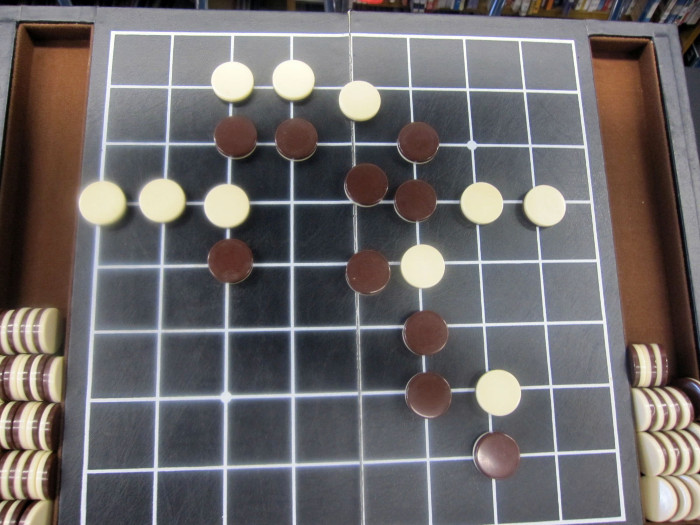Chinese Strategy Board Game: "Weiqi" or "Go"
Collection: Everyday Connections
Go is a strategic board game for two players. It is also known as "igo ' in the Japanese language, "weiqi" or "wei ch'i" in Chinese, or "baduk" in Korean. Go is noted for being rich in strategic complexity despite its simple rules.
The game is played by two players who alternately place black and white stones on the vacant intersections of a grid of 19 x 19 lines. The object of the game is to control a larger portion of the board than the opponent. A stone or a group of stones is captured and removed if it has no empty adjacent intersections, the result of being completely surrounded by stones of the opposing color. Placing stones close together helps them support each other and avoid capture. On the other hand, placing stones far apart creates influence across more of the board. Part of the strategic difficulty of the game stems from finding a balance between such conflicting interests. Players strive to serve both defensive and offensive purposes and choose between tactical urgency and strategic plans.
Go originated in ancient China more than 2,500 years ago, and although it is not known exactly when the game was invented, by the 3rd century BC, it was already a popular pastime, as indicated by a reference to the game in the Analects of Confucius.
Source:
http://en.wikipedia.org/wiki/Go_(game)
